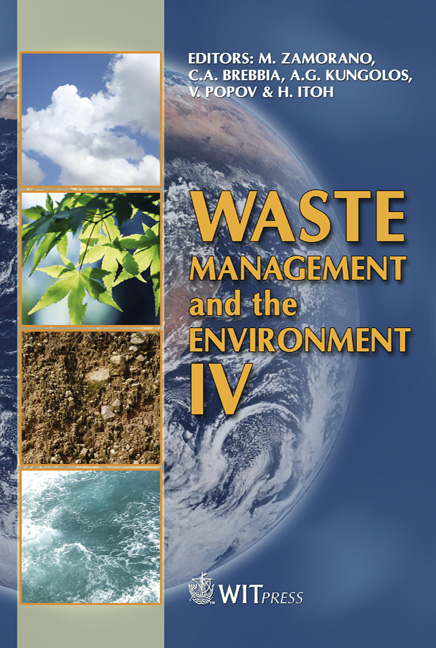Persistence And Fate Of Highly Soluble Pharmaceutical Products In Various Types Of Municipal Wastewater Treatment Plants
Price
Free (open access)
Transaction
Volume
109
Pages
9
Page Range
799 - 807
Published
2008
Size
334 kb
Paper DOI
10.2495/WM080811
Copyright
WIT Press
Author(s)
C. Gagnon & A. Lajeunesse
Abstract
Municipal effluents are important source of contaminants including many socalled Pharmaceutical and Personal Care Products (PPCPs) substances, whose potential impacts on the receiving environment are poorly understood. New emerging substances, in the form of pharmaceutical drugs like antibiotics, antiinflammatory, and anti-convulsive, are now being frequently measured in these wastewaters. While PPCPs substances undergo major transformation at the treatment plant and again in the receiving waters, their bioavailability and toxicity may be modified considerably. The influence of different wastewater treatment processes on pharmaceutical products was investigated. Pharmaceutical substances such as clofibric acid, carbamazepine, diclofenac, ibuprofen and naproxen were found in the Montreal physicochemical primary- treated effluents at concentrations ranging from 13 to 3522 ng/L. Most of the substances were eliminated at a rate lower than 10%. Biological treatments (aerobic conditions) with activated sludge resulted in much better removal rates (> 50%) for those studied substances. Interestingly, this type of process showed some selectivity with respect to the size and polarity of the removed substances; the smallest and most polar substances were removed at better rates, while the persistent carbamazepine (273-483 ng/L) and diclofenac (52-68 ng/L) were poorly removed. In the case of treatment by aerated lagoons, the most abundant substances were hydroxy-ibuprofen (339-3938 ng/L), naproxen (16-763 n/L) and carbamazepine (164-425 ng/L). To assess the impacts of all these contaminants on the environment and human health, we need to better understand the chemical and physical transformations occurring at the treatment plant and in the receiving waters. Keywords: pharmaceuticals, treatment plant, fate, removal, wastewater.
Keywords
pharmaceuticals, treatment plant, fate, removal, wastewater.





